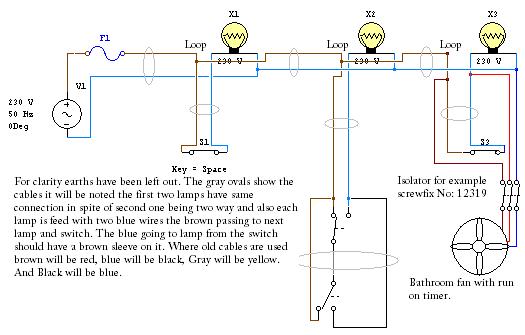Ups guilty as charged. I often refer to a 5/6A lighting circuit as fuse was 5A and MCB 6A. Same with 15/16 and 30/32.
However I would have thought in context one should have been able to work it out?
Same with red/brown, black/blue for wire colours.
So now we need to wait for "roofer glasgow" to see if that fits.
Most lighting circuits include items like ceiling roses which are rated either 5 or 6 amp according to age of fitting and as a result although the BS7671 says you can have 16A on a lighting circuit this is not the case where ceiling roses are used as junction boxes.
Light bulbs are suppose to contain internal fuses to limit their power to 2A and most BA22d lamp holders are only rated at 2A but from bitter experience some CFU are not so fused and although a unit blowing on a 6A circuit will normally open the breaker rather than do any other damage with 16A often it will weld contacts to the BA22d base meaning the holder also needs changing.
As a result whatever the BS7671 says I would keep lighting circuits to 6A limit!
As to 5 or 6 amp I would not worry fitting a 5A ceiling rose to a 6A MCB I personally consider them as the same. But of course one could get pedantic?
is general method.


